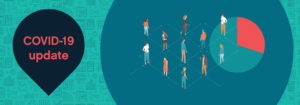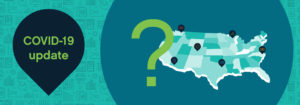By this point, we’ve all heard the statistic that healthcare data is growing at 36% annually. The result of this growth is that we’re all swimming in charts that, unfortunately, often lack a narrative to help a data consumer easily grasp the key takeaways. Your organization likely has a set of standard reports and dashboards that are distributed to stakeholders regularly. Increasingly, those dashboards just add to the white noise of data that surrounds you instead of providing insights and leading to action in the way they were intended.
But organizations are cutting through that noise by adding narrative insights to their data–that is, machine-assisted findings written in plain text that help busy decision-makers see, understand and act on key insights quickly.
Tell your data story
A data dashboard is a medium for telling a story with data, but the consumers of the data must be able to adequately and accurately interpret it to inform the correct actions. Organizations found that as they move business intelligence from the IT department that even with low code, self-service dashboard tools, they have a shortage of employees who know how to choose the right data for analysis. Many don’t know how to create the appropriate data visualization to ensure they are contextualizing the information to tell the right story.
While visualization can help someone see a trend faster, the nuance of the trend requires a larger perspective. To make an impact with analytics, dashboards need to tell a story that can be told across the organization from executives to managers to front-line employees.
Augment your analytics reality
Augmented analytics, which uses machine learning and artificial intelligence (AI) in conjunction with traditional analysts and analytics, can help close data literacy gaps through a combination of algorithms to find key data insights and natural language generation to present results to data consumers who may not be data scientists. AI algorithms may find data patterns and contributors that a human would not have thought to look for, and thus couldn’t find, and natural language generation can help call out or identify key findings from a data visualization that may have been difficult for the human eye to find, such as totals across the categories of a bar chart.
As organizations continue to rely more heavily on data-driven decisions, augmented analytics allows for faster and broader adoption of data. Employees who are not trained data scientists can quickly and easily see the key points of a data story, written in plain language and available for self-service.
These data stories can be displayed on a desktop, tablet or smartphone because the combination of charts and narratives pull the reader through the data and bubble up critical insights on the metrics that matter the most to them.
Augmented analytics can help serve up those insights and turn them into topics a user can follow. This way, if major changes occur, a user can be alerted and provided context on the drivers of the shift. This drives more value from analytics across all levels and skillsets within an organization.
Altogether, augmenting your organization’s data reality is an important step you can take to help more people better understand existing data. So, augment your reality today and improve tomorrow’s operational, financial and clinical outcomes.
Get our take on industry trends
Avoid COVID-19 modeling pitfalls by eliminating bias, using good data
COVID-19 models are being used every day to predict the course and short- and long-term impacts of the pandemic. And we’ll be using these COVID-19 models for months to come.
Read on...Population Health Amid the Coronavirus Outbreak
In speaking with many colleagues throughout the provider and payer healthcare community, I’ve found an overwhelming sense of helplessness to the outbreak’s onslaught. This is exacerbated by the constant evolution of reported underlying medical conditions that indicate a higher risk of hospitalization or mortality for a coronavirus patient.
Read on...COVID-19 and the Financial Storm Ahead for Providers
Across the country, healthcare organizations are seeing 40%-80% declines in monthly charges with some of the most profitable services lines only seeing 20% of their normal monthly volumes during the pandemic.
Read on...3 Steps Any Healthcare Organization Can Take to Improve Enterprise Analytics
By Kristin Weir When it comes down to the most basic purpose of why organizations use analytics, it’s simple: they…
Read on...


